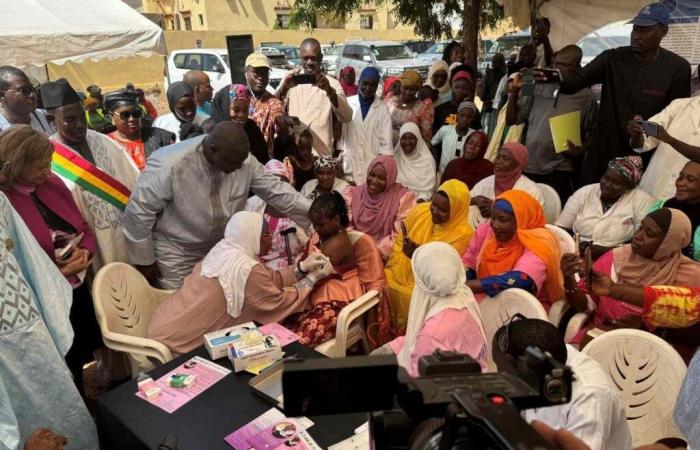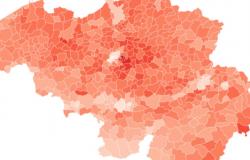Cervical cancer remains a tragic scourge for many Malian women. Fatoumata, a 38-year-old woman, is one victim among many others.
“I had a fibroid first, and it took me a while to treat it. It was when I started bleeding that I had the operation. After the operation, I started having discharge, discharge without color or smell, it looked like water. After this, I went to see my gynecologist. The result showed that I had cervical cancer. I spent between 5 and 6 million CFA francs for the treatment. The operation alone cost me two million CFA francs. »
With this initiative, Mali hopes to protect more than 320,000 young girls each year, reducing cases of cervical cancer by almost 90%. This could help prevent more than 3,600 deaths each year among Malian women.
This testimony highlights the difficulties encountered by many women facing a late diagnosis, as well as expensive and often inaccessible treatment in Mali, where access to quality care remains limited.
The burden of cervical cancer in Mali
Cervical cancer, caused by persistent infection with certain types of human papillomavirus (HPV), is a major public health problem in Mali. It is the second most common cancer among Malian women aged 15 to 44. This disease, often detected too late, continues to wreak havoc in the country, causing thousands of deaths each year.
In addition to medical barriers, cultural taboos often prevent women from speaking openly about their symptoms. Popular beliefs, which sometimes associate these illnesses with curses or spells, delay diagnosis and worsen the consequences. “Cervical disease is sometimes seen as a spell cast by a co-wife, a sister-in-law or a former partner,” explains a sexual and reproductive health activist.
A major breakthrough: the introduction of the HPV vaccine
In a historic development, the Malian government recently integrated the HPV vaccine into its routine immunization program. At the launch of this campaign in Bamako, Dr. Ibrahima Diarra, director of the National Immunization Center of Mali, underlined the importance of this progress: “A single dose is enough to protect a 10-year-old girl for more than ten years. against viruses responsible for 70% of cervical cancers. » The vaccine is now free for young girls, thanks to the support of Gavi and co-financing from the Malian state.
© UNICEF/UNI673856/Borra
With this initiative, Mali hopes to protect more than 320,000 young girls each year, reducing cases of cervical cancer by almost 90%. This could help prevent more than 3,600 deaths each year among Malian women.
A step towards health equity
This vaccination program marks a significant step forward toward public health equity. Cervical cancer kills thousands of women every day, particularly in low-income countries. In 2022, 348,000 deaths were recorded worldwide, 90% of them in these countries. By introducing the vaccine, Mali is doing an act of justice by making prevention accessible to all girls, whether they live in cities or rural areas.
Dr Diarra explains why the choice fell on 10-year-old girls: “We chose this age group because their cervix is still healthy, well before the start of sexual intercourse, which guarantees maximum effectiveness of the vaccine. » This approach is in accordance with the recommendation of the World Health Organization (WHO) to prioritize the vaccination of young adolescent girls aged 9 to 14 years.
Mali stands out as one of the first Sahelian nations and the first Gavi-supported country in the fragile and conflict-affected category to introduce the HPV vaccine.
By preventing cervical cancer, the introduction of the HPV vaccine also helps reduce costs associated with expensive treatments for the disease. “A single dose costs around 150,000 FCFA in private pharmacies, but thanks to the support of Gavi and co-financing from the Malian state, this vaccine is now free as part of the routine vaccination program,” rejoices Dr. Diarra.
Mali stands out as one of the first Sahelian nations and the first Gavi-supported country in the fragile and conflict-affected category to introduce the HPV vaccine. This revolutionary initiative not only protects generations of Malian women, but also serves as an example for other countries in the region. This is a major step forward in Gavi’s global goals to vaccinate 86 million girls in low- and middle-income countries by 2025.
Fight against false information
Malian health authorities also face a major challenge: misinformation. Rumors and fake news sometimes circulate around vaccines, fueled by opponents. “It is crucial to counter this misinformation. This vaccine is safe, effective and does not compromise the fertility or reproductive health of young girls,” insists Dr Diarra.
The Minister of Health, Colonel Assa Badiallo Touré, also reaffirmed the safety and importance of this vaccine during the launch.
The introduction of the HPV vaccine represents an important victory for women’s health and a step towards a more equitable future in Mali. By breaking the cycle of disease through prevention, the country sets an example of a public health model centered on equity, which protects the most vulnerable and ensures a more secure future for Malian women.
Follow the author on X/Twitter: @diallokei






